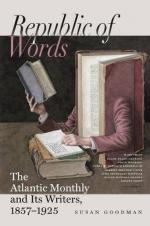When we began these notes of travel, we meant to take our fellow-voyagers over the continent of Europe, and perhaps to all the quarters of the globe. We should make a book, instead of an article, if we attempted it. Let us, instead of this, devote the remaining space to an enumeration of a few of the most interesting pictures we have met with, many of which may be easily obtained by those who will take the trouble we have taken to find them.
Views of Paris are everywhere to be had, good and cheap. The finest illuminated or transparent paper view we have ever seen is one of the Imperial Throne. There is another illuminated view, the Palace of the Senate, remarkable for the beauty with which it gives the frescoes on the cupola. We have a most interesting stereograph of the Amphitheatre of Nismes, with a bull-fight going on in its arena at the time when the picture was taken. The contrast of the vast Roman structure, with its massive arched masonry, and the scattered assembly, which seems almost lost in the spaces once filled by the crowd of spectators who thronged to the gladiatorial shows, is one of the most striking we have ever seen. At Quimperle is a house so like the curious old building lately removed from Dock Square in Boston, that it is commonly taken for it at the first view. The Roman tombs at Arles and the quaint streets at Troyes are the only other French pictures we shall speak of, apart from the cathedrals to be mentioned.
Of the views in Switzerland, it may be said that the Glaciers are perfect, in the glass pictures, at least. Waterfalls are commonly poor: the water glares and looks like cotton-wool. Staubbach, with the Vale of Lauterbrunnen, is an exquisite exception. Here are a few signal specimens of Art. No. 4018, Seelisberg,—unsurpassed by any glass stereograph we have ever seen, in all the qualities that make a faultless picture. No. 4119, Mont Blanc from Sta. Rosa,—the finest view of the mountain for general effect we have met with. No. 4100, Suspension-Bridge of Fribourg,—very fine, but makes one giddy to look at it. Three different views of Goldau, where the villages lie buried under these vast masses of rock, recall the terrible catastrophe of 1806, as if it had happened but yesterday.
Almost everything from Italy is interesting. The ruins of Rome, the statues of the Vatican, the great churches, all pass before us but in a flash, as we are expressed by them on our ideal locomotive. Observe: next to snow and ice, stone is best rendered in the stereograph. Statues are given absolutely well, except where there is much foreshortening to be done, as in this of the Torso, where you see the thigh is unnaturally lengthened. See the mark on the Dying Gladiator’s nose. That is where Michel Angelo mended it. There is Hawthorne’s Marble Faun, (the one called of Praxiteles,) the Laocooen, the Apollo Belvedere, the Young Athlete with the Strigil, the Forum, the Cloaca Maxima, the Palace of the Caesars, the bronze Marcus Aurelius,—those wonders all the world flocks to see,—the God of Light has multiplied them all for you, and you have only to give a paltry fee to his servant to own in fee-simple the best sights that earth has to show.




